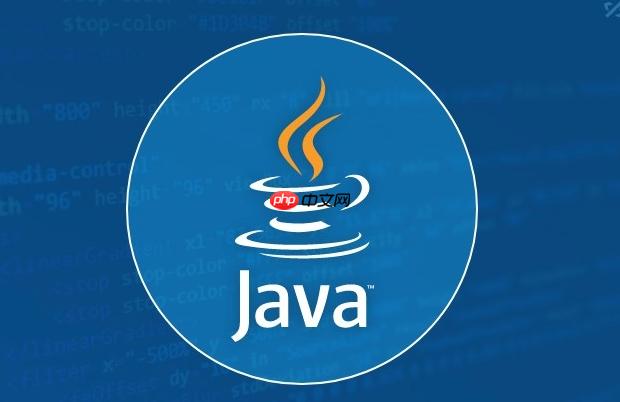aop记录日志是通过定义切面、切点和通知,在不修改原有代码的情况下实现日志功能。1. 引入aop依赖,如spring项目使用spring-boot-starter-aop;2. 创建切面类,定义日志逻辑;3. 使用@pointcut定义切点,指定拦截的方法;4. 通过@before、@afterreturning等注解定义通知类型;5. 可使用@around记录方法执行时间;6. aop适用于多层通用逻辑,拦截器适用于特定框架请求处理。性能优化包括精确切点、异步日志、减少耗时操作等。

AOP记录日志,简单来说,就是用一种优雅的方式,在不修改原有代码的基础上,把日志记录功能“织入”到程序中。这能让代码更干净,更易于维护。

解决方案

AOP(Aspect-Oriented Programming,面向切面编程)在Java中用于记录日志,核心在于定义切面、切点和通知。
立即进入“豆包AI人工智官网入口”;
立即学习“豆包AI人工智能在线问答入口”;
依赖引入: 首先,确保你的项目引入了AOP相关的依赖。如果是Spring项目,spring-boot-starter-aop 通常就足够了。对于非Spring项目,可以考虑AspectJ。

<!-- Maven 示例 -->
<dependency>
<groupId>org.springframework.boot</groupId>
<artifactId>spring-boot-starter-aop</artifactId>
</dependency>定义切面(Aspect): 切面是包含横切逻辑的类。它定义了在哪些地方(切点)以及何时(通知)应用这些逻辑。
import org.aspectj.lang.JoinPoint;
import org.aspectj.lang.annotation.AfterReturning;
import org.aspectj.lang.annotation.Aspect;
import org.aspectj.lang.annotation.Before;
import org.aspectj.lang.annotation.Pointcut;
import org.slf4j.Logger;
import org.slf4j.LoggerFactory;
import org.springframework.stereotype.Component;
import java.util.Arrays;
@Aspect
@Component
public class LoggingAspect {
private final Logger logger = LoggerFactory.getLogger(this.getClass());
// 定义切点:指定哪些方法需要被拦截
@Pointcut("execution(* com.example.service.*.*(..))") // 拦截 service 包下的所有类的所有方法
public void serviceMethods() {}
// 前置通知:在方法执行前执行
@Before("serviceMethods()")
public void logMethodCall(JoinPoint joinPoint) {
String methodName = joinPoint.getSignature().getName();
Object[] args = joinPoint.getArgs();
logger.info("调用方法: {},参数: {}", methodName, Arrays.toString(args));
}
// 后置通知:在方法成功执行后执行
@AfterReturning(pointcut = "serviceMethods()", returning = "result")
public void logMethodReturn(JoinPoint joinPoint, Object result) {
String methodName = joinPoint.getSignature().getName();
logger.info("方法 {} 返回值: {}", methodName, result);
}
// 异常通知:在方法抛出异常后执行 (可以省略,根据实际需求)
// @AfterThrowing(pointcut = "serviceMethods()", throwing = "exception")
// public void logMethodException(JoinPoint joinPoint, Throwable exception) {
// String methodName = joinPoint.getSignature().getName();
// logger.error("方法 {} 抛出异常: {}", methodName, exception.getMessage());
// }
}定义切点(Pointcut): 切点定义了在哪里应用切面逻辑。可以使用表达式来精确匹配方法。execution(* com.example.service.*.*(..)) 这个表达式的意思是:拦截 com.example.service 包下所有类的所有方法。
定义通知(Advice): 通知定义了何时以及如何应用切面逻辑。常见的通知类型包括:
配置AOP: 如果是Spring Boot项目,通常不需要额外的配置,因为 spring-boot-starter-aop 会自动启用AOP。 如果是非Spring项目,可能需要手动配置AspectJ。
测试: 编写测试用例,验证日志记录是否正常工作。
AOP日志记录的性能影响有多大?如何优化?
AOP 引入的额外处理会带来一定的性能开销,但通常可以忽略不计,尤其是在 I/O 密集型应用中。不过,如果切点过于宽泛,拦截了大量的方法,或者通知中的逻辑过于复杂,性能影响就会变得明显。
优化策略:
java.util.concurrent 包中的线程池,或者使用专门的异步日志框架(如 Log4j2)。如何使用AOP记录方法的执行时间?
使用 AOP 记录方法的执行时间,可以使用 @Around 通知。
import org.aspectj.lang.ProceedingJoinPoint;
import org.aspectj.lang.annotation.Around;
import org.aspectj.lang.annotation.Aspect;
import org.aspectj.lang.annotation.Pointcut;
import org.slf4j.Logger;
import org.slf4j.LoggerFactory;
import org.springframework.stereotype.Component;
@Aspect
@Component
public class ExecutionTimeAspect {
private final Logger logger = LoggerFactory.getLogger(this.getClass());
@Pointcut("execution(* com.example.service.*.*(..))")
public void serviceMethods() {}
@Around("serviceMethods()")
public Object logExecutionTime(ProceedingJoinPoint joinPoint) throws Throwable {
long start = System.currentTimeMillis();
Object proceed = joinPoint.proceed(); // 执行目标方法
long executionTime = System.currentTimeMillis() - start;
logger.info("方法 {} 执行耗时: {} ms", joinPoint.getSignature().getName(), executionTime);
return proceed;
}
}ProceedingJoinPoint 允许你控制目标方法的执行。 joinPoint.proceed() 会执行目标方法,并返回其结果。 通过计算方法执行前后时间差,可以得到方法的执行时间。
AOP和拦截器(Interceptor)有什么区别?什么时候使用AOP?什么时候使用拦截器?
AOP 和拦截器都是用于实现横切关注点的技术,但它们在实现方式和适用场景上有所不同。
选择:
举例:
总之,选择 AOP 还是拦截器,取决于具体的应用场景和需求。没有绝对的优劣之分,只有更适合的选择。
以上就是Java中AOP记录日志 解析切面编程的详细内容,更多请关注php中文网其它相关文章!

每个人都需要一台速度更快、更稳定的 PC。随着时间的推移,垃圾文件、旧注册表数据和不必要的后台进程会占用资源并降低性能。幸运的是,许多工具可以让 Windows 保持平稳运行。

Copyright 2014-2025 https://www.php.cn/ All Rights Reserved | php.cn | 湘ICP备2023035733号